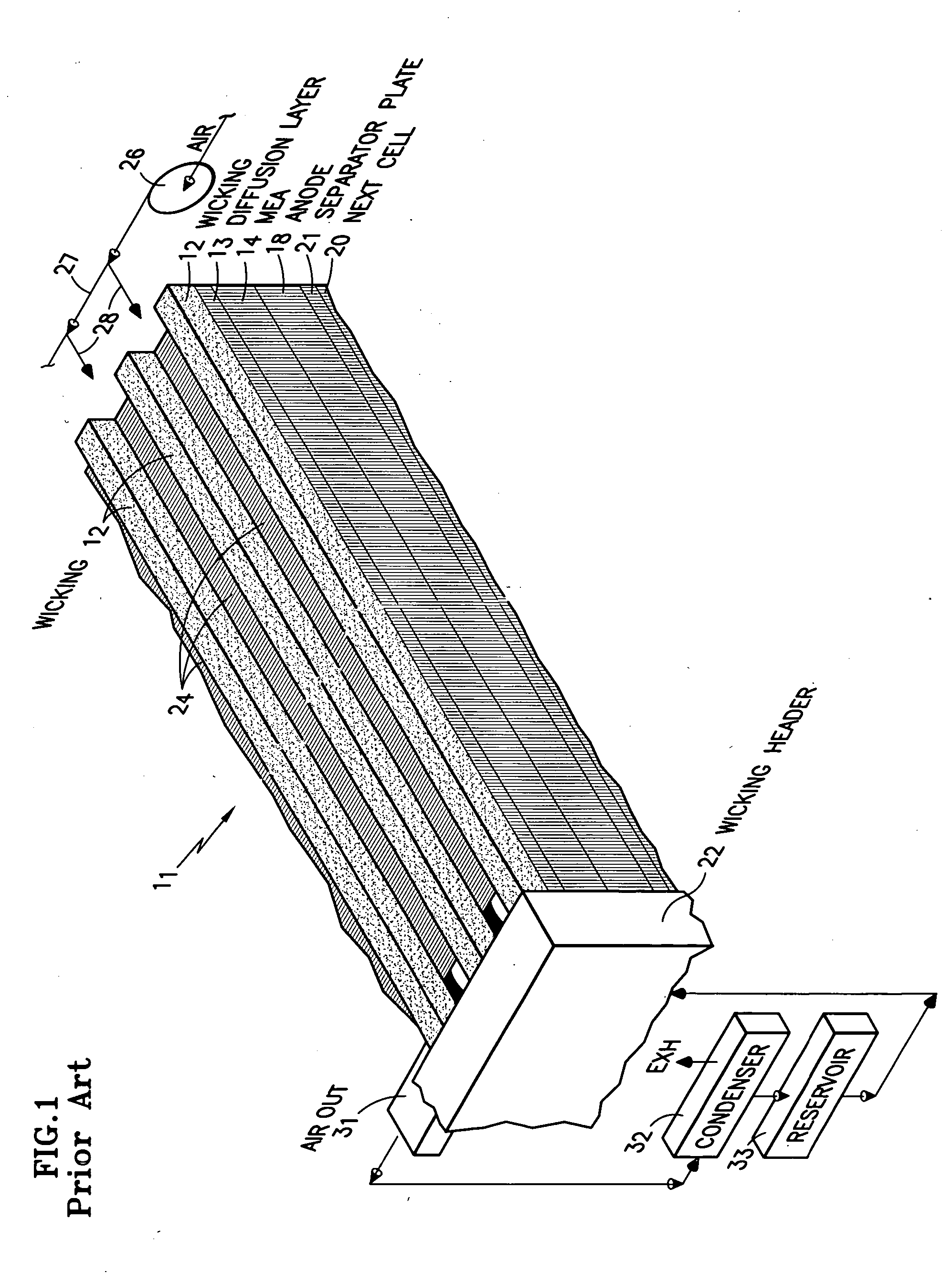Fuel cells evaporative reactant gas cooling and operational freeze prevention
- Summary
- Abstract
- Description
- Claims
- Application Information
AI Technical Summary
Benefits of technology
Problems solved by technology
Method used
Image
Examples
Embodiment Construction
[0029] Referring now to FIG. 2, a fuel cell power plant 36 according to the present invention includes a stack 37 of fuel cells 38 which are shown disposed vertically, although they may be disposed horizontally.
[0030] In this embodiment, fuel from the source 41 is provided to a fuel inlet 42 and flows to the right in a first fuel pass, as indicated by the bold arrow 43, to a fuel turn manifold 44. The fuel gas then flows downwardly and into a second fuel pass of the fuel flow fields, wherein the fuel gas flows to the left as indicated by the bold arrow 45. From a fuel outlet 47, the fuel may flow through a recycle pump 48 (perhaps with valves not shown) back to the fuel inlet 42, and may be periodically purged to ambient through a valve 49, all as is known in the art. Single pass, triple pass or other fuel flow configurations may be used.
[0031] In the embodiment of FIG. 2, air is provided by a pump 52 to an air inlet 53, and the air flows upwardly through the oxidant reactant gas ...
PUM
| Property | Measurement | Unit |
|---|---|---|
| Temperature | aaaaa | aaaaa |
| Pressure | aaaaa | aaaaa |
| Flow rate | aaaaa | aaaaa |
Abstract
Description
Claims
Application Information
 Login to View More
Login to View More - R&D
- Intellectual Property
- Life Sciences
- Materials
- Tech Scout
- Unparalleled Data Quality
- Higher Quality Content
- 60% Fewer Hallucinations
Browse by: Latest US Patents, China's latest patents, Technical Efficacy Thesaurus, Application Domain, Technology Topic, Popular Technical Reports.
© 2025 PatSnap. All rights reserved.Legal|Privacy policy|Modern Slavery Act Transparency Statement|Sitemap|About US| Contact US: help@patsnap.com



